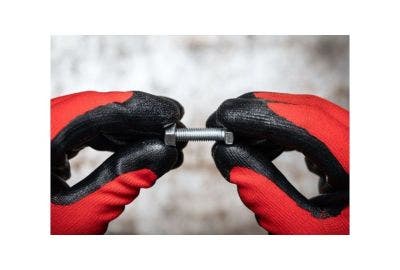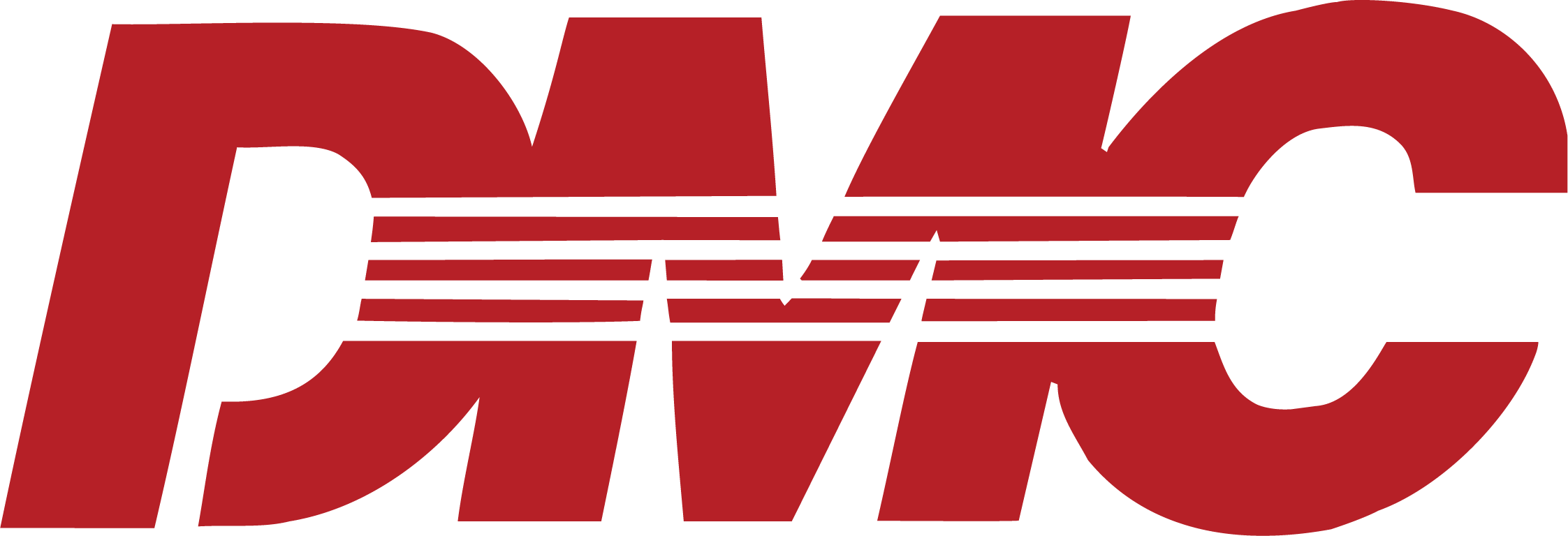Banding tools are indispensable in various industries, such as aerospace, car manufacturing, packaging, shipping and construction, where securing loads and materials is crucial for safety and efficiency. This comprehensive guide will explore the different types of banding tools available, their specific applications, key features to consider when purchasing, cost factors, and essential maintenance tips.
Whether you’re a seasoned professional or a hobbyist, this guide will equip you with the knowledge to select and use the right banding tool for your needs, helping you avoid common pitfalls and maximise the effectiveness of your equipment.
Understanding Banding Tools
Banding tools, also known as strapping tools, are used to secure loads, wire harnesses and packages with bands or straps, providing stability during transport and storage. These tools help keep items intact and safe from damage.
The primary function of banding tools is to apply tension to the band or strap, securing it tightly around the load.
Different industries use these tools for specific needs, from bundling construction materials to securing pallets of goods for shipment.
Types of Banding Tools
Manual Banding Tools
Manual banding tools are the simplest type of banding tools, operated by hand without any power source. These tools are typically used for low-volume applications and smaller packages.
They are suitable for environments where mobility and flexibility are essential, as they do not require electricity or batteries.
This makes them ideal for small businesses, warehouses, and situations where portability is a priority. Additionally, manual banding tools are beneficial for securing loads in remote locations where power sources are unavailable.
One of the main advantages of manual banding tools is their cost-effectiveness. They are generally more affordable than their powered counterparts, making them a practical choice for businesses with limited budgets. Moreover, they are lightweight and portable, allowing users to easily transport them to different job sites.
Manual banding tools are also relatively easy to use and maintain, requiring minimal training and upkeep.
However, there are some drawbacks to using manual banding tools.
They are best suited for low-volume applications and may not be efficient for large-scale operations. The manual operation requires more physical effort, which can be tiring for users over extended periods.
Additionally, manual banding tools are slower than automatic or battery-powered tools, which can affect productivity in high-demand environments.
Automatic Banding Tools
Automatic banding tools streamline the banding process by automating the steps of tensioning, sealing, and cutting the strap. This automation enhances productivity and reduces physical strain, making it ideal for high-volume applications.
Automatic banding tools are particularly beneficial in industries where speed and consistency are needed. They are commonly used in large warehouses, distribution centres, and manufacturing plants, where the need to secure numerous wire harnesses, packages and pallets quickly is required.
By automating the banding process, these tools help maintain a high level of uniformity in securing loads, which is essential for preventing damage during transport and storage.
One of the key advantages of automatic banding tools is their ability to handle large volumes of work with minimal human intervention.
This reduces the risk of repetitive strain injuries and fatigue among workers, as the physical effort involved is significantly lower compared to manual tools.
Additionally, automatic banding tools are often equipped with adjustable settings, allowing users to customise the tension and sealing strength according to their specific requirements.
However, there are some potential drawbacks to consider.
Automatic banding tools typically have a higher upfront cost compared to manual or battery-powered tools. They also require access to a power source, which may limit their portability. Furthermore, these tools can be more complex to operate and maintain, necessitating proper training and regular servicing to allow for the best performance.
Battery-Powered Banding Tools
Battery-powered banding tools offer a convenient and versatile option for securing loads and packages. These tools combine the portability of manual tools with the efficiency of automatic tools, making them a popular choice in various settings.
Powered by rechargeable batteries, these tools can be used in locations without access to electrical outlets, providing flexibility and ease of use.
One of the main advantages of battery-powered banding tools is their convenience. They eliminate the need for manual effort while still allowing for mobility, making them suitable for both indoor and outdoor applications.
This makes them particularly useful in industries such as construction, where the ability to move freely around the job site is useful.
Additionally, battery-powered tools are often designed with ergonomic features to improve user comfort and reduce fatigue during prolonged use.
Battery-powered banding tools are also known for their efficiency. They can perform the tensioning, sealing, and cutting functions quickly and accurately, which helps increase productivity.
These tools typically come with adjustable settings, enabling users to tailor the tension and sealing strength to their specific needs.
This versatility makes them suitable for a wide range of applications, from light-duty tasks to more demanding industrial uses.
However, there are some considerations to keep in mind.
Battery-powered banding tools generally have a higher initial cost compared to manual tools, though they are often less expensive than fully automatic tools. The need to recharge batteries can also be a limitation, particularly in high-volume operations where continuous use is required. It's essential to have spare batteries on hand to avoid downtime.
These tools are widely recognised for their durability, performance, and user-friendly designs, making them a reliable choice for professionals in various industries.
Pneumatic Banding Tools
Pneumatic banding tools are powered by compressed air, offering a powerful and efficient solution for securing loads and packages. These are particularly effective in industrial settings where high tension and speed are required.
Pneumatic banding tools are known for their ability to handle heavy-duty applications, making them ideal for use in sectors such as manufacturing, shipping, and construction.
One of the primary benefits of pneumatic banding tools is their strength.
They can generate higher tension compared to manual or battery-powered tools, meaning that even the heaviest loads are securely strapped.
This makes them particularly useful for applications that involve large bundles, pallets, or irregularly shaped items. The high tension capability of pneumatic tools helps in maintaining the integrity of the load during transport and storage.
Another significant advantage is the speed and efficiency of pneumatic banding tools. The use of compressed air allows for rapid tensioning, sealing, and cutting, which significantly reduces the time needed to secure each load.
This efficiency is crucial in high-volume environments where quick turnaround times are essential to maintaining productivity.
However, pneumatic banding tools do come with some considerations. They require a reliable source of compressed air, which can limit their portability.
The initial setup, including the purchase of an air compressor, can also be a significant investment.
Additionally, these tools can be heavier and bulkier compared to manual and battery-powered options, which may impact ease of use in some settings.
Despite these considerations, pneumatic banding tools are a popular choice in many industries due to their power and efficiency.
Applications of Banding Tools
Banding tools are utilised across various industries to secure loads and packages, ensuring stability and safety during transport and storage. Each sector has specific requirements, which influence the choice of banding tools. Here’s a closer look at how different industries make use of these essential tools:
- Packaging and Shipping: In the packaging industry, banding tools are crucial for securing boxes, cartons, and other packaging materials. These tools ensure that items are held together tightly, reducing the risk of damage during handling and transport. This is particularly important in shipping, where goods are frequently moved and subjected to various stresses. Properly secured packages arrive at their destination intact, contributing to overall customer satisfaction.
- Construction: The construction industry relies heavily on banding tools to bundle materials such as pipes, timber and steel rods. By securing these items, construction professionals can streamline their operations, reduce handling time, and ensure that materials are readily available when needed on-site. The use of banding tools in this industry also contributes to safer job sites by preventing loose materials from becoming hazards.
- Manufacturing: In manufacturing, banding tools play a vital role in securing products during production and distribution. These tools are used to bundle finished goods, components, and raw materials, keeping them intact throughout the production process and during shipment to customers. This helps maintain product quality, as the risk of damage or defects caused by movement or mishandling is minimised.
- Agriculture: The agriculture sector uses banding tools to secure bales of hay, straw and other agricultural products. By bundling these items, farmers can transport and store them more efficiently, reducing waste and spoilage. Banding tools also help in organising and securing products for sale, simplifying inventory management and fulfilling orders.
- Automotive and Aerospace (Wire Harnessing): In the automotive and aerospace industries, banding tools are essential for securing wire harnesses. These harnesses, composed of numerous cables and wires, are used to organise and protect electrical systems in vehicles and aircraft. Banding tools ensure that wires are bundled neatly and securely, improving both safety and functionality by reducing wear and the risk of electrical faults. Given the complexity and safety demands in these industries, reliable wire harnessing is critical to the operation and longevity of vehicles and aircraft.
Each industry benefits from the use of banding tools in unique ways, but the common thread is the increased safety, efficiency, and reliability they bring to load securing. Understanding these specific applications can guide professionals in choosing the right banding tool for their particular needs.
Key Features to Look for in Banding Tools
Durability and Build Quality
When selecting banding tools, durability is a critical factor to consider.
High-quality tools are made from robust materials that can withstand regular use and harsh conditions. Stainless steel and reinforced plastics are commonly used in constructing durable banding tools, providing resistance to wear and corrosion.
It’s essential to assess the build quality by examining the tool's components and construction. Investing in a durable banding tool gives you longevity and reliability, reducing the need for frequent replacements and repairs.
Ease of Use
User-friendly banding tools can significantly boost efficiency and reduce fatigue, especially in high-volume environments.
Features that contribute to ease of use include ergonomic handles, lightweight designs, and intuitive controls. Tools that are easy to operate not only improve productivity but also reduce the risk of operator error.
When selecting a banding tool, consider models that offer adjustable settings, quick-release mechanisms, and clear instructions.
Tensioning and Cutting Capabilities
Effective tensioning and cutting are essential for securing loads properly. Banding tools with superior tensioning capabilities can apply the necessary force to tighten bands or straps around the load securely.
Cutting features should be sharp and precise to provide clean cuts without damaging the material. When comparing different banding tools, look for models that offer adjustable tension settings and high-quality cutting mechanisms.
Versatility
Versatile banding tools can handle various materials and applications, making them valuable in different settings. A versatile tool should be compatible with multiple strap types and sizes, allowing users to switch between different tasks easily.
Look for features such as interchangeable components and adjustable settings that assist the tool's adaptability.
Versatility is particularly required for businesses that handle diverse packaging and securing needs.
Cost Considerations
When choosing banding tools, consider their cost, which varies by type, features and brand.
Manual tools are the least expensive, while automatic and pneumatic tools are pricier due to advanced features.
Battery-powered tools offer a middle ground. High-quality materials like stainless steel or reinforced plastic increase durability and cost.
Features such as adjustable tension settings and ergonomic designs also impact price. Balancing cost and quality is essential; investing in durable, reliable tools saves money in the long run. Establish a budget, identify key features, and explore bulk purchasing or promotional offers for cost savings.
Maintenance and Care for Banding Tools
Proper maintenance and care of banding tools are essential to their longevity and strong performance. Regular maintenance not only helps extend the life of the tools but also prevents unexpected breakdowns and provides safety during use.
Keeping banding tools in good working condition involves routine inspections, cleaning, and servicing to prevent wear and tear. Regular maintenance helps identify potential issues before they become major problems, reducing downtime and repair costs.
Well-maintained tools also perform better which means that loads are secure and reduce the risk of damage during transport.
A basic maintenance routine for banding tools includes several key steps.
- Regularly inspect the tool for signs of wear, damage, or malfunction, checking for loose or missing parts, cracks and other visible issues.
- Cleaning the tool after each use to remove dirt, dust, and debris is also needed.
- Using a soft cloth and a mild cleaning agent, wipe down the exterior, but avoid using harsh chemicals that can damage the tool.
Lubrication of moving parts as recommended by the manufacturer is crucial, as proper lubrication reduces friction and wear, allowing for a smooth operation.
Additionally, checking the tensioning and cutting mechanisms for proper function is necessary to make sure the tension is adjustable and the cutter is sharp and precise.
For battery-powered tools, make sure the batteries are charged and stored properly, following the manufacturer’s guidelines for battery maintenance to extend their lifespan.
Even with regular maintenance, banding tools may encounter issues. For instance, if the tool is not applying sufficient tension, it may be due to worn or damaged tensioning components, which should be inspected and adjusted as needed.
If the tool is not cutting the strap cleanly, it could indicate a dull or damaged cutter, which may need replacing or sharpening.
For battery-powered tools, making sure the batteries are fully charged and not damaged is essential and replacing old or faulty batteries can help maintain high performance.
To extend the lifespan of your banding tools, store them properly in a clean, dry place away from moisture and extreme temperatures. Using protective cases or covers can prevent dust and damage.
Always follow the manufacturer’s guidelines for use, maintenance, and storage to make sure the tool is used correctly and maintained according to its design specifications.
Additionally, scheduling regular professional servicing for your banding tools is advisable.
Qualified technicians can perform thorough inspections, repairs, and maintenance to keep your tools in excellent condition.
By sticking to a regular maintenance routine and following these care tips, you can make sure that your banding tools remain reliable and effective for years to come.
Common Mistakes to Avoid
Using banding tools effectively requires an understanding of the common pitfalls that can compromise load security and tool longevity. Here are some frequent mistakes and how to avoid them:
- Improper Tensioning: One of the most critical aspects of using a banding tool is applying the correct tension. If the tension is too loose, the load may shift during transport, leading to potential damage. Conversely, over-tensioning can damage the strap or even the load itself. Always ensure that the tension settings are appropriate for the type of strap and the specific load. Refer to the manufacturer's guidelines for recommended tension levels.
- Neglecting Regular Maintenance: Like any tool, banding tools require regular maintenance to function effectively. Failing to clean and service the tool can lead to malfunctions, decreased performance and a shorter lifespan. Implement a routine maintenance schedule that includes cleaning, lubrication, and inspection of key components to ensure the tool remains in good working order.
- Using the Wrong Tool for the Job: Not all banding tools are suited for every application. Using a manual tool for high-volume tasks or a pneumatic tool in a setting without adequate compressed air supply can lead to inefficiency and frustration. Match the tool to the specific needs of the job to maximise efficiency and achieve the best results.
- Choosing Low-Quality Straps: The effectiveness of a banding tool is heavily dependent on the quality of the straps used. Low-quality straps are more likely to break or fail, undermining the security of the load. Invest in high-quality straps that are compatible with your banding tool to ensure reliable performance.
- Ignoring Safety Guidelines: Safety is paramount when using banding tools. Failing to follow proper safety procedures, such as wearing protective gear and ensuring a clear working area, can lead to accidents. Always adhere to safety guidelines provided by the manufacturer and conduct regular training for all tool users to prevent injuries.
Avoiding these common mistakes will not only extend the life of your banding tools but also ensure that your loads are securely fastened, reducing the risk of damage during transport and storage.
This guide has explored the different types of banding tools, their applications, key features to consider, cost factors, and essential maintenance practices. By understanding the specific needs of your industry and the characteristics of each tool, you can make an informed decision that enhances efficiency and safety in your operations.
Remember, the longevity and effectiveness of your banding tools depend not only on choosing the right product but also on maintaining it properly and avoiding common mistakes. Investing time in learning about the tools, following best practices, and staying up-to-date with maintenance will pay off in the long run.






















